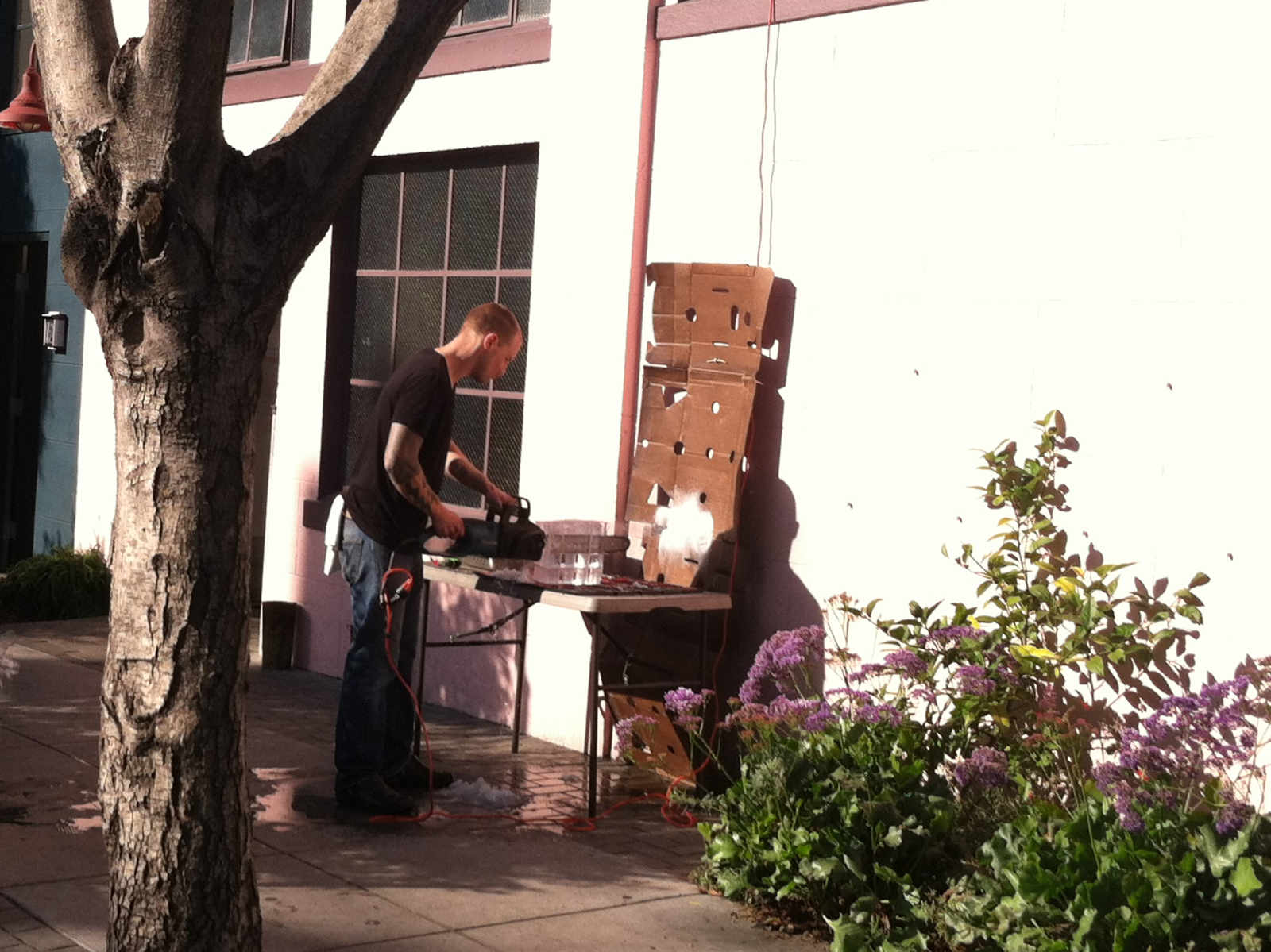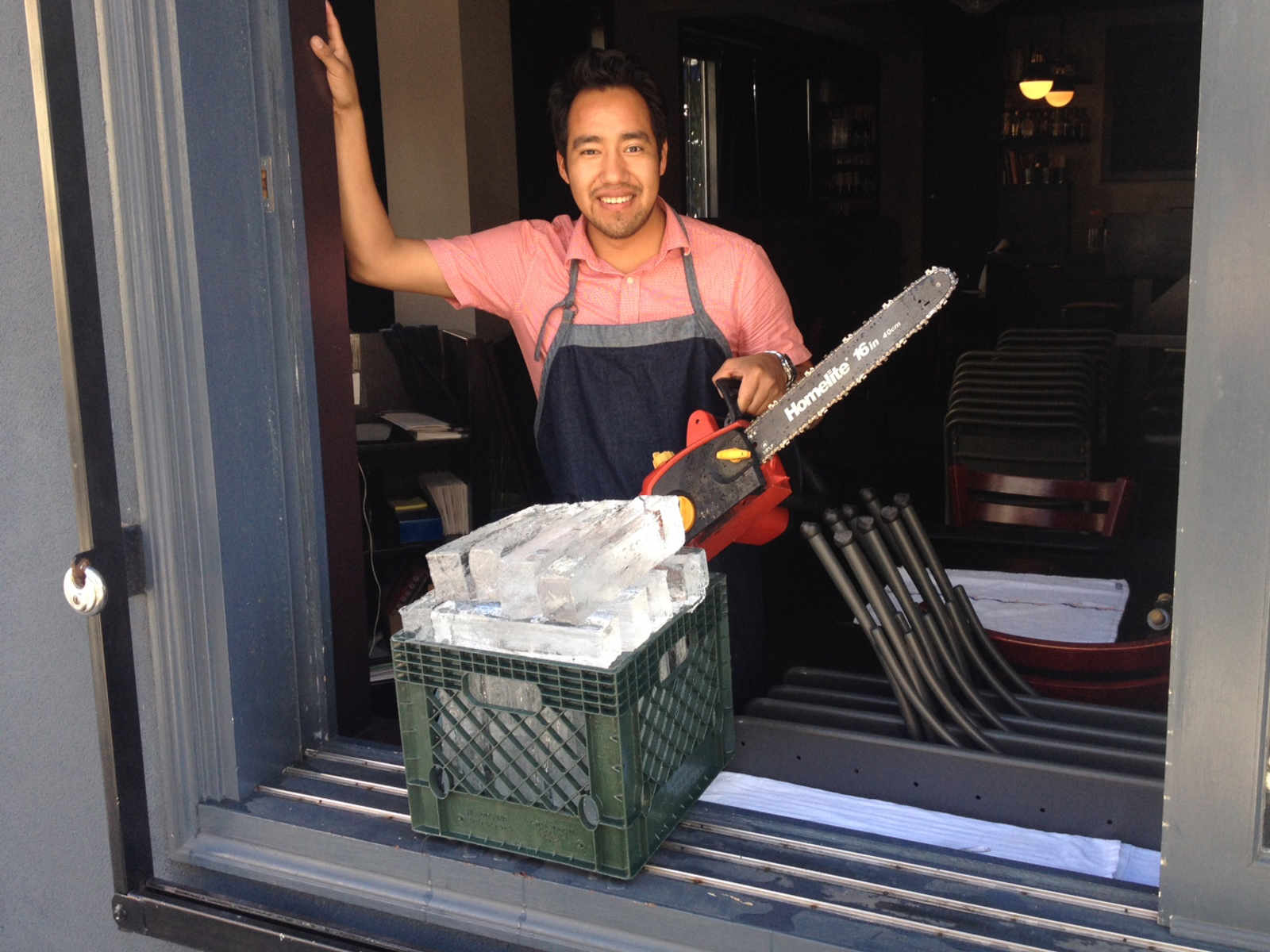— By Jack Morse (@jmorse_) |

Anyone who has visited one of San Francisco’s ubiquitous artisanal cocktail bars has surely noticed a single unifying theme: fancy ice cubes. These cubes, often large, crystal clear, hand-hewn, and geometrically assured of their edginess, have in many ways become a short hand for an affected hipness so often prevalant in bars riding the latest fenugreek trend.
Delivered in huge blocks, and frequently broken down by chainsaw on the sidewalk, these over-sized cubes seem on the surface to suggest that a drinking establishment takes its shit seriously. Like, hey dawg, don’t worry, we got your fancy-ass ice needs covered. But here’s the problem—it turns out that this trend is awful for the environment.
Last month Mother Jones looked into how these large, clear blocks of ice are actually made, and what they found is not encouraging [emphasis added]:
According to Pete Palm, vice president of sales at Western Pacific Distributors—one of California’s major food service equipment wholesalers—a Clinebell [the special machine used to make large ice blocks] has to run for more than three days to make the amount of ice a regular restaurant ice machine could produce in one day. “If I do some quick calculations on the lbs of ice and the [horsepower] rating I come to the conclusion that it does not meet what would be considered an energy star unit,” Palm wrote in an email to Mother Jones. (Energy Star is an EPA standard for energy-efficient consumer products; most commercial ice makers are Energy Star-certified.)
Artisanal ice makers also have to deliver their product to their customers, which means packing it in dry ice and carting it around in a van. And their high standards for the shape of their blocks can exacerbate the inefficiency. If [artisanal ice maker Charles Hartz] finds a block with a chip or a crack, he says, he won’t use it. “I’m kind of particular,” he admits.
And so in catering to the tastes of those who feel an “enormous hand-hewn ice cube” is what makes or breaks a cocktail, the latest batch of painfully hip watering holes is displaying an active disregard for the environment.
At least it’s disregard served with a smile.

Comments (10)
Not to mention they make for a terrible drink. The huge block is constantly in the way, and you can’t shake the drink up effectively when the components start to settle/separate.
I wonder how, nationwide, the energy used to make artisanal ice cubes compares to energy used to power recreational ATV’s crushing lizards in the desert every weekend. I’ll bet it’s 1 to 10,000. I’m not suggesting that everything shouldn’t be as efficient as possible, just that I want to destroy all the ATV’s killing my lizard brethren first.
So, looking at the specs on the Clinebell page, it looks to me like one of those Clinebell freezers is something less than 1 hp - ½ hp for the compressor and ~120 watts x 2 for the circulation pumps - and you have to run it for 4 days to get 2 blocks of ice. 1 hp is 765 watts, but let’s round up and call it a kilowatt for 4 days to get two cubes, which is roughly 100 kilowatt-hours of energy, or something like .1 kilowatt-hours per cube.
A compact car(say, a Civic) runs on roughly 100 kilowatts. So if you are willing to walk or bike to that hipster bar that is a mile from you instead of taking a car, you have offset the carbon cost of all the artisanal ice cubes you(and probably all your friends, unless you are real thirsty) are going to have.
Just a little perspective.
This post sponsored by Hornitos® and a complete lack of self-awareness.
they make trays for large ice cubes. who cares if they’re not perfectly clear? no need to go through rigmarole of transporting ice and cutting it down to size with a chainsaw.
Well, all this time I thought it might be related to the overuse of fuel-inefficient vehicles and excessive ranching and factories in China spewing out reams of jet-black smoke daily to fill all our consumer product needs, but turns out it’s the fancy ice cubes. Just the fancy ice cubes. Phew! We can tackle this climate change thing after all.
I actually thought this article was satire–I had no idea that hand-hewn artisinal ice cubes were actually a thing. Am I the only one who is content with ice cubes as long as they makes the drink cold and gradually diluted?
More hard hitting journalism from Jack!
I had no idea how complex it was to make those stupid cubes before I saw David Rees (the artisinal pencil sharpening guy) demonstrate the process on TV.
I feel sorry for all of you who use regular ice cubes. One of the (many) benefits of working for Facebook is that I can afford any type of ice cube I want.